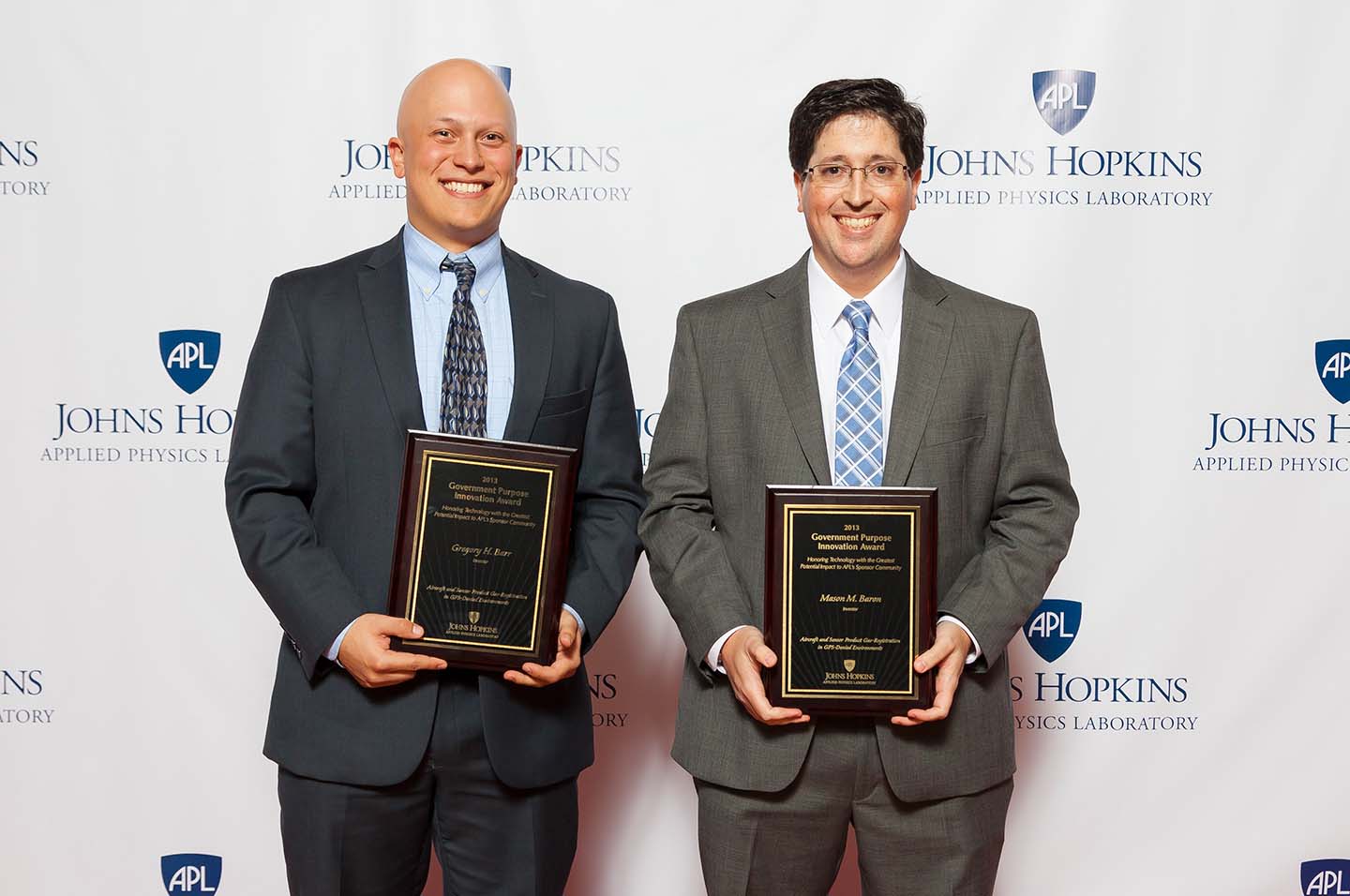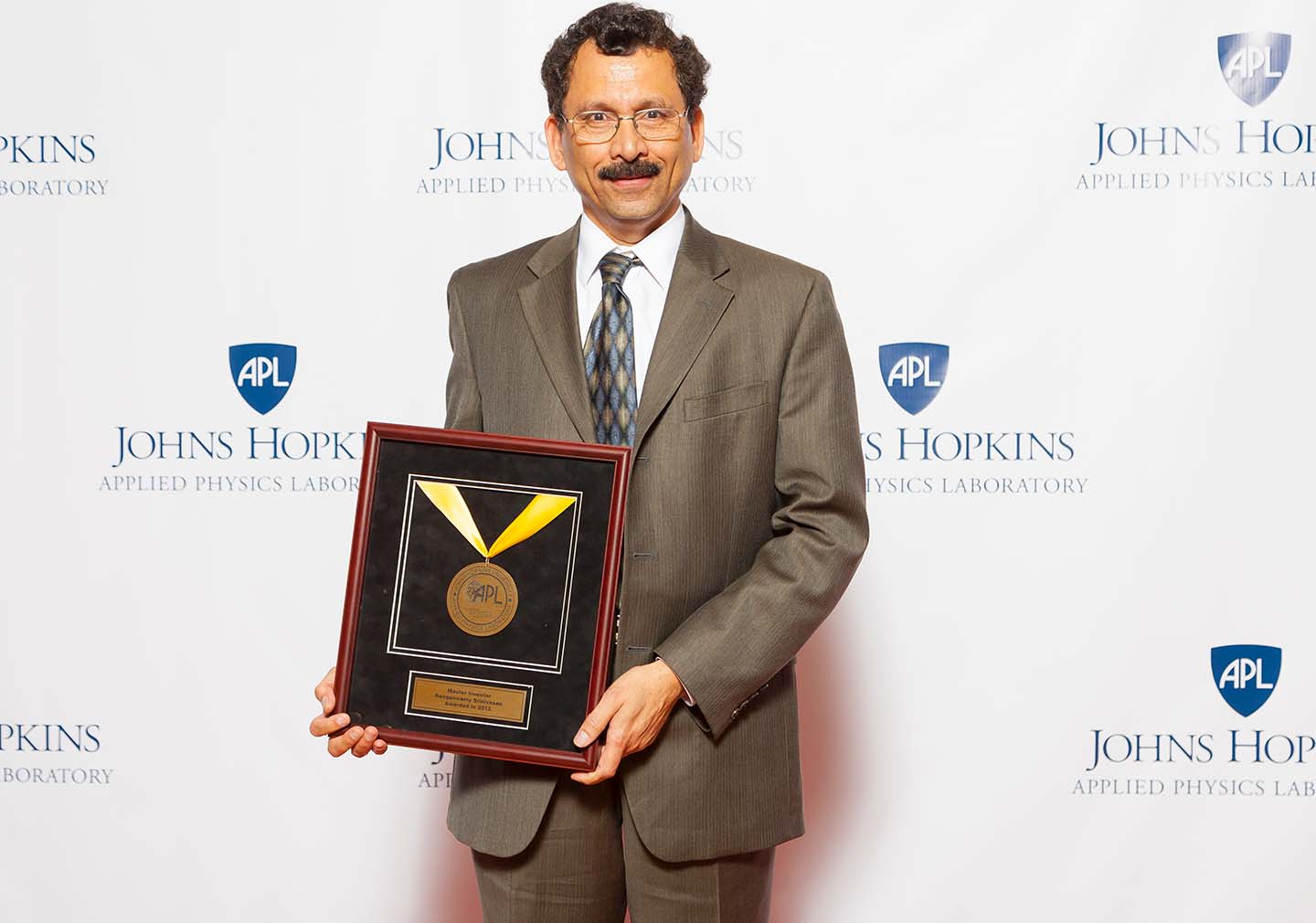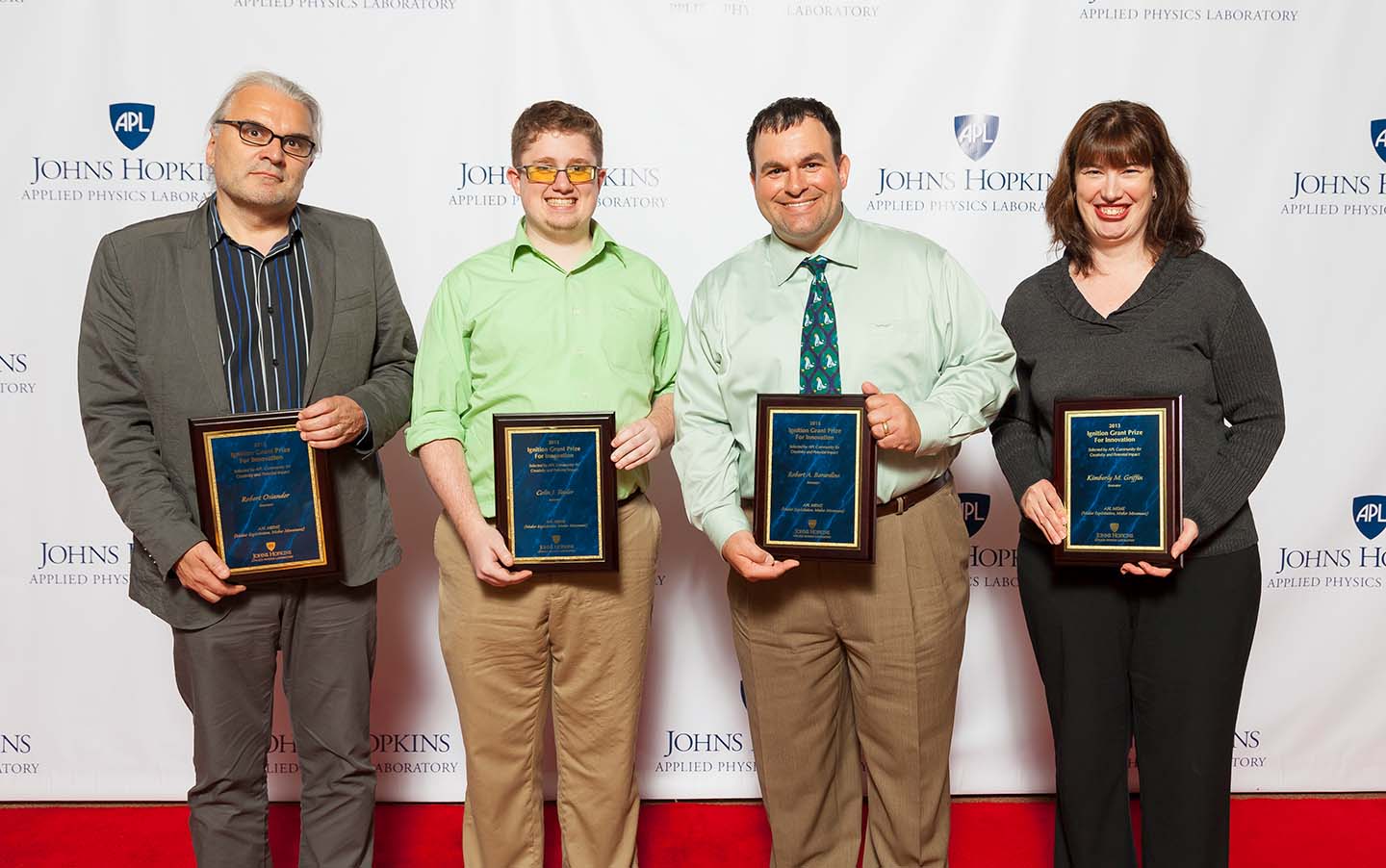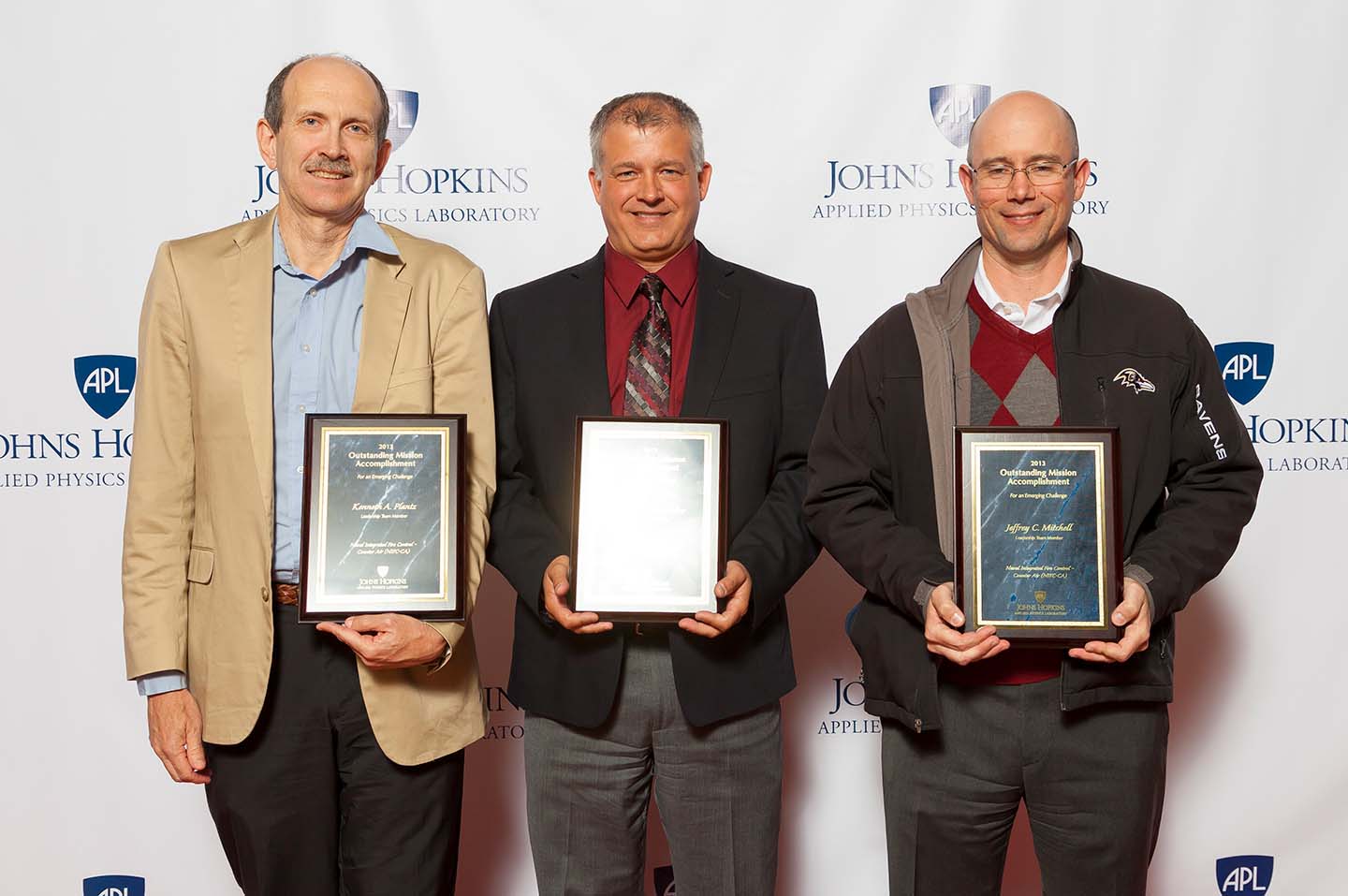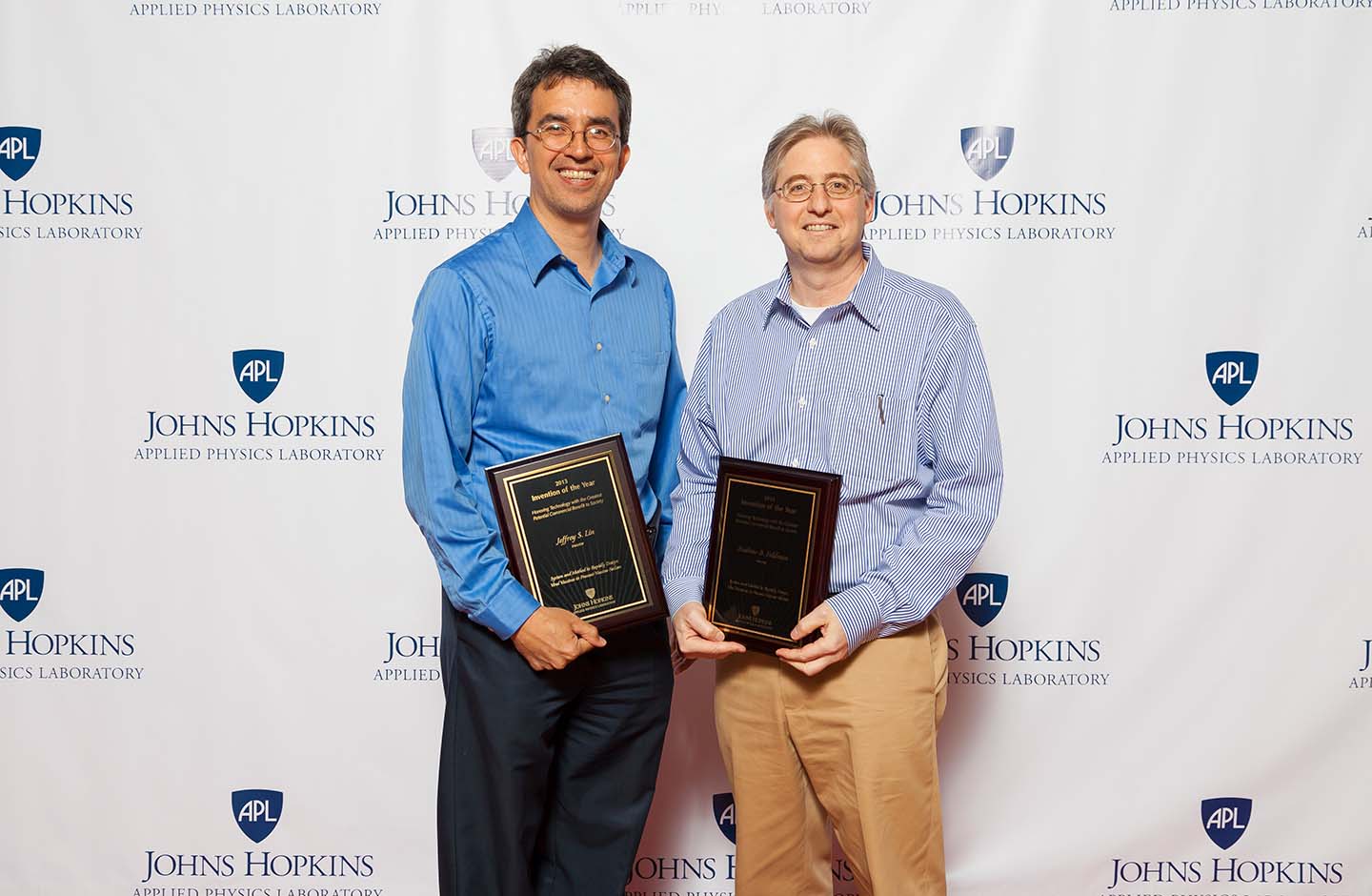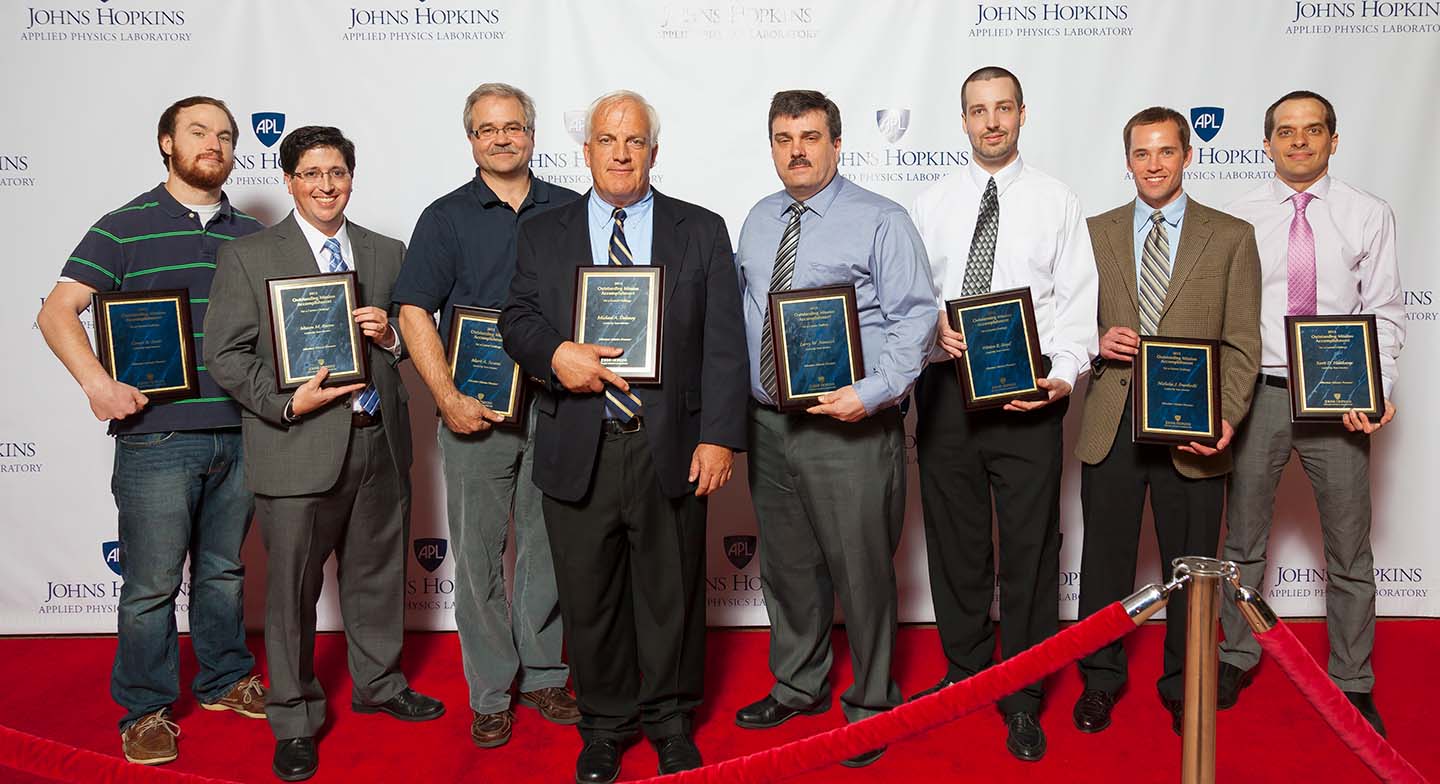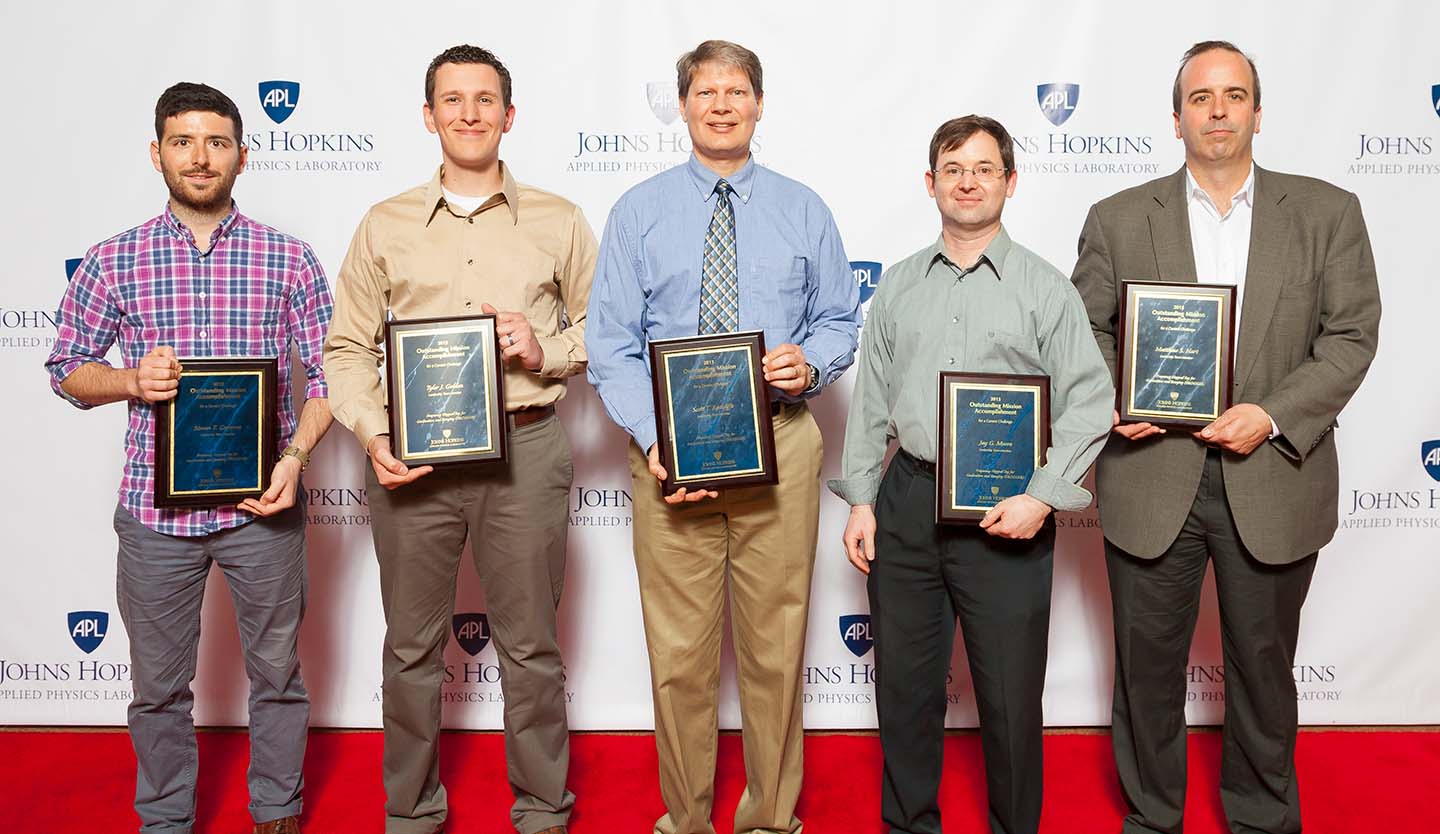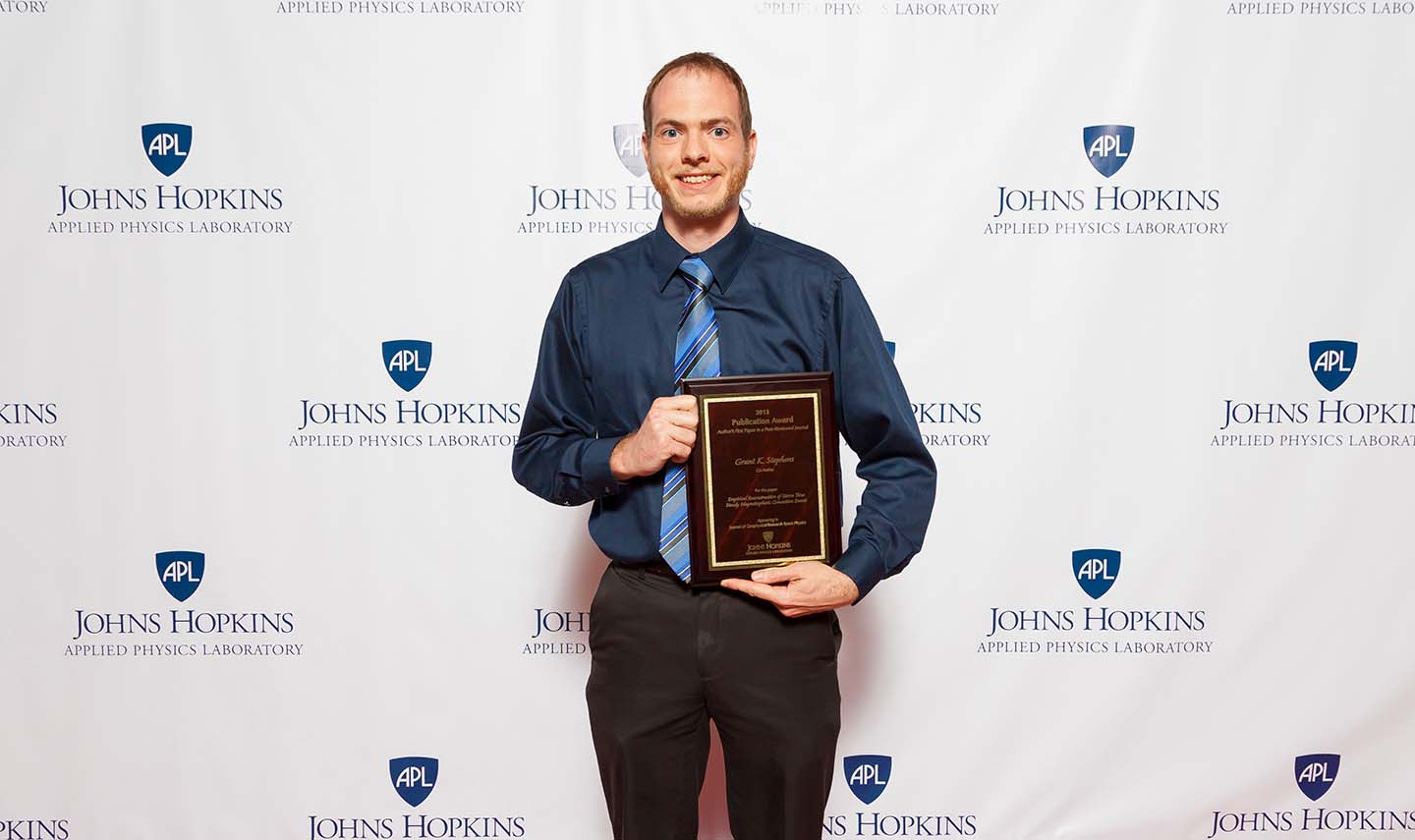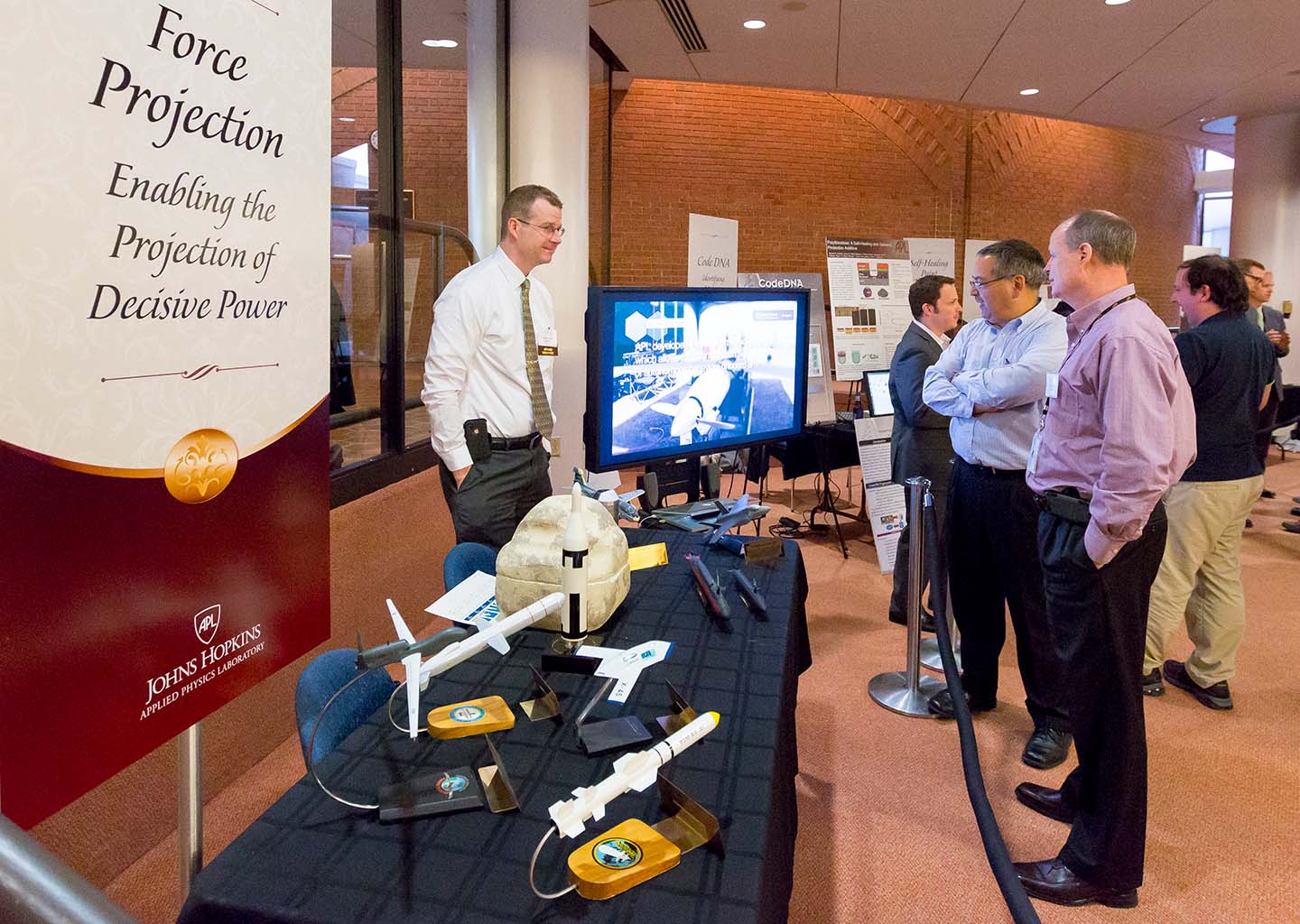A method for quickly predicting the evolution of viruses was selected as The Johns Hopkins University Applied Physics Laboratory’s Invention of the Year for 2013. The award was presented April 29 at APL’s annual Technical Achievement Awards ceremony, which also recognized top innovations, publications and researchers at APL from 2013.
“We honor 410 staff [members] who were named in 96 nominated entries for 15 technical achievement awards,” said APL Assistant Director for Science and Technology Jerry Krill. “Being nominated is quite an accomplishment, given the significance of APL achievements, many of which prove to be historical.”
He applauded APL’s “creative and talented” staff members for dedicating themselves to “ensuring the security and the well-being of this country through scientific discovery and engineering research leading to operational capabilities.”
Krill, along with Office of Technology Transfer Supervisor Norma Lee Todd, addressed the inventors and guests and presented trophies and cash awards to the top inventors. Attendees included Ralph Semmel, Director of APL; Laurie Edberg and Lori Albin representing Senator Barbara Mikulski (D-MD); and Howard County Council member Courtney Watson.
The Invention of the Year winner, developed by Andrew Feldman and Jeffrey Lin of the Research and Exploratory Development Department, was chosen by an outside review panel of representatives from industry, the high-tech sector and patent law. Existing vaccines are designed to protect against viruses that are already infecting humans and animals. Viruses quickly adapt to resist vaccines and immune systems, and new vaccines currently take years to develop. The award-winning technology speeds up this process and can predict new viruses before they exist.
The Lab’s Government Purpose Innovation Award — which recognizes an invention that has the potential to make a major impact in the defense community, and the nation — went to Mason Baron, Gregory Barr and James Cochran for algorithms developed to perform geo-registration for aerial surveillance and reconnaissance in a GPS-denied environment.
Rengaswamy “Srini” Srinivasan, a battery specialist and electrochemist, was awarded the Master Inventor Award, in recognition for his 10 issued U.S. patents while employed at APL. He is only the 25th person in the history of the laboratory to qualify for this prestigious award. Click here to learn more about Srinivasan’s work.
“Inventions are a key indicator of how innovative an organization is,” said Todd. “In Fiscal 2013, APL staff members disclosed 230 inventions illustrating the incredible talent here at the laboratory, and that’s what these awards celebrate.”
An Innovation Award that recognizes the most creative Ignition Grant project for 2013 went to Robert Osiander, Kim Griffin, Bob Berardino and Colin Taylor for introducing to the Lab the Maker Movement, which embraces do-it-yourself techniques and a learning culture where makers teach one another skills such as 3-D printing, programming hardware, rapid prototyping, and laser cutting. Ignition Grants are a Lab-wide initiative to encourage staff members to explore and pursue innovative ideas outside of APL’s traditional processes.
Addressing Sponsor Challenges
This year APL established two new awards — Mission Accomplishment Awards — representing the most impactful programs and projects for the laboratory’s sponsors in both the near term and for the future. Two winners were selected for Mission Accomplishment-Current Challenge, one for defense operations and one for intelligence operations.
The winning entry for a current defense operational challenge is the Minotaur Mission Processor for airborne surveillance of maritime surface traffic. For intelligence operations, the winning project was the Frequency Hopped Technology for Geolocation and Ranging.
The Mission Accomplishment Award- Emerging Challenge was presented to the Naval Integrated Fire Control – Counter Air program, conceived by APL in the 1970s and developed over decades to greatly extend the engagement range against incoming air threats by networking both ships and aircraft.
Publications
There were 36 papers and books nominated for Publication Awards, selected from the technical writings of APL staff members and outside collaborators. The six winners are:
Author’s First Paper in a Journal or Proceedings: Grant Stephens, “Empirical Reconstruction of Storm Time Steady Magnetospheric Convection Events,” published in the Journal of Geophysical Research Space Physics.
Outstanding Paper in the Johns Hopkins APL Technical Digest (The Walter G. Berl Award): Christopher Bradburne, Lucy Carruth, John Benson, Jeffrey Lin, Ashok Sivakumar and Ruth Vogel, “Implementing Genome-Informed Personalized Medicine in the US Air Force Medical Service via the Patient-Centered Precision Care Research Program.”
Outstanding Research Paper in an Externally Refereed Journal Publication: David Lawrence, John Goldsten, Patrick Peplowski, Brian Anders, David Bazell, Ralph McNutt and Douglas Rodgers, “Evidence for Water Ice Near Mercury’s North Pole from MESSENGER Neutron Spectrometer Measurements,” published in Science.
Outstanding Development Paper in an Externally Refereed Journal Publication: Christopher Ratto, “Bayesian Context-Dependent Learning for Anomaly Classification in Hyperspectral Imagery,” published in the IEEE Transactions on Geoscience and Remote Sensing.
Outstanding Professional Books: Jack Burbank, Julia Andrusenko, Jared Everett and William Kasch, “Wireless Networking: Understanding Internetworking Challenges,” published by Wiley – IEEE Press.
Outstanding Special Publication: Michael Kutzer and Mehran Armand, “Continuum Manipulator Made of Interlocking Fibers,” published in the Proceedings of the 2013 IEEE International Conference on Robotics and Automation.
Recognizing Innovation
Seventeen projects were nominated for the R. W. Hart Prizes for Excellence in Independent Research and Development, which honors those who make significant contributions to science and technology through projects in basic and applied research and exploratory and advanced engineering.
“High-Energy Laser Effects on Space Systems and Materials” was named best research project. This year, there were two winners for best development project: “Offensive Operations in an Anti-Access/Area Denial Environment” and “Agile Infrared Scene Projector on Carbon Nanotubes.”
